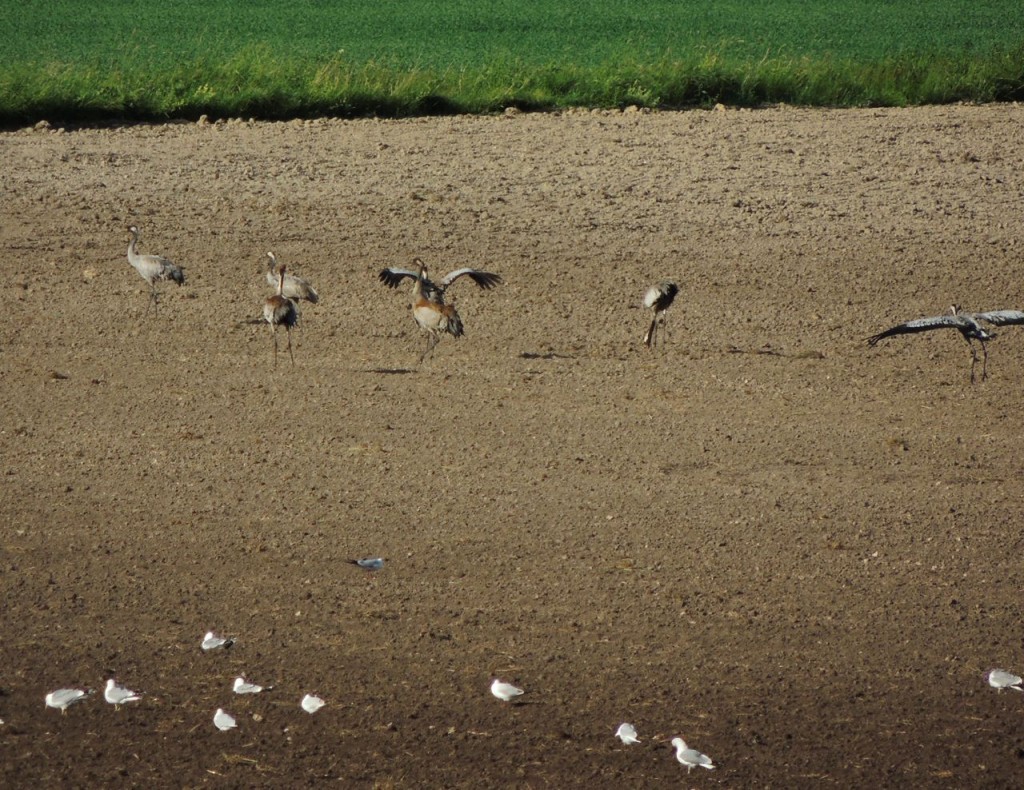June 16 Hedemora, Sweden. Upon our arrival at at Stockholm’s international airport the immigration officer dutifully asked a round of penetrating questions: “Purpose of your visit?” Vacation.” “Where are you staying?” “Stockholm.” “How Long are you staying?” “Three weeks.” He looked up sharply and retorted; “Three weeks! In Stockholm?” Well, actually no, that was only a part of the plan.
It’s a majestic and apparently well-functioning city and we’ve seen bits of it from a few of its many sides; and have no complaints. But today it was time to leave the city for another part of Sweden, Dalarna, a ‘landskap’ or province to the north of the capital and the emotional folk-heart of the country. To my mind, it has a landscape not unlike that of Maine, made of abrupt forest-covered hills with wide knee-deep green farm fields between, like rolled out carpets at their feet. It was among the quiet and sometimes darker corners of this countryside that I started seeing and hearing different and sometimes quite startling birds. I kept thinking I was seeing my bird of the day until the next surprise popped up.
First, Goldfinches, a species that for centuries was caught and kept as cage birds for their musical tinkling songs, carmine red faces and bright yellow wing-flashes, I saw a couple flying beside us along a quiet roadside where thistles and other rich seed-bearing plants provide plenty of food.

Next came a Cuckoo, clearly heard but not seen. The first of the year confirms the arrival of full blown spring in Northern Europe. It’s often difficult to be sure just how close or how far away it is when you first catch the distinctive two-syllable call. Like the goldfinches, cuckoos have a centuries-old place in the soul of country-folk and find expression in cuckoo clocks and classical music.
But Bird of the Day has to be a Ural Owl (although there was to be stiff competition later). We spotted this bird flying away from us on large silent wings and into a forest clearing as we drove along a narrow, quiet road. My companions (non-birders all) were mildly impressed at the glimpse of an owl, but I needed more and was wondering how this guest in Sweden could reasonably kick and scream to get it. With some urging and assurances of the possibility of success, I suggested that we back up slowly to the same clearing. The bird was just where we’d seen it go to, on a branch about fifty metres into the forest, but not at all relaxed at being rediscovered so after a few seconds flew away deeper into the forest and out of sight. I’d seen enough though to be able to go to my field guide later and be sure that it was a Ural Owl, in shape somewhat like a small Great Grey Owl, no other owl of that general shape and size has a range that includes Sweden.
The last sighting that almost displaced the Ural Owl from its Bird of the Day status was a group of Cranes seen far off in a tilled field. My driver companion was pretty sure that I’d lost all sense of rational proportion when I begged him to stop while I inspected and tried to photograph a distant group of Cranes (of all things). They’re common enough around here and something of a noisy spectacle when they first return in spring, but apparently really not anything to get all that excited about. Easy for him to say, but these are not good old Sandhill Cranes (Grus canadensis), but Cranes! The original benchmark of the genus Grus, in this case Grus grus; Crane. As is the case with so many European birds’ names, it lacks any adjectival component, so it’s just Crane, or just Robin, Kestrel or Goldfinch; it’s been the task and burden of the rest of the world to distinguish their new-found lookalikes with something to set them apart. Well, we’re happy enough to do it.

